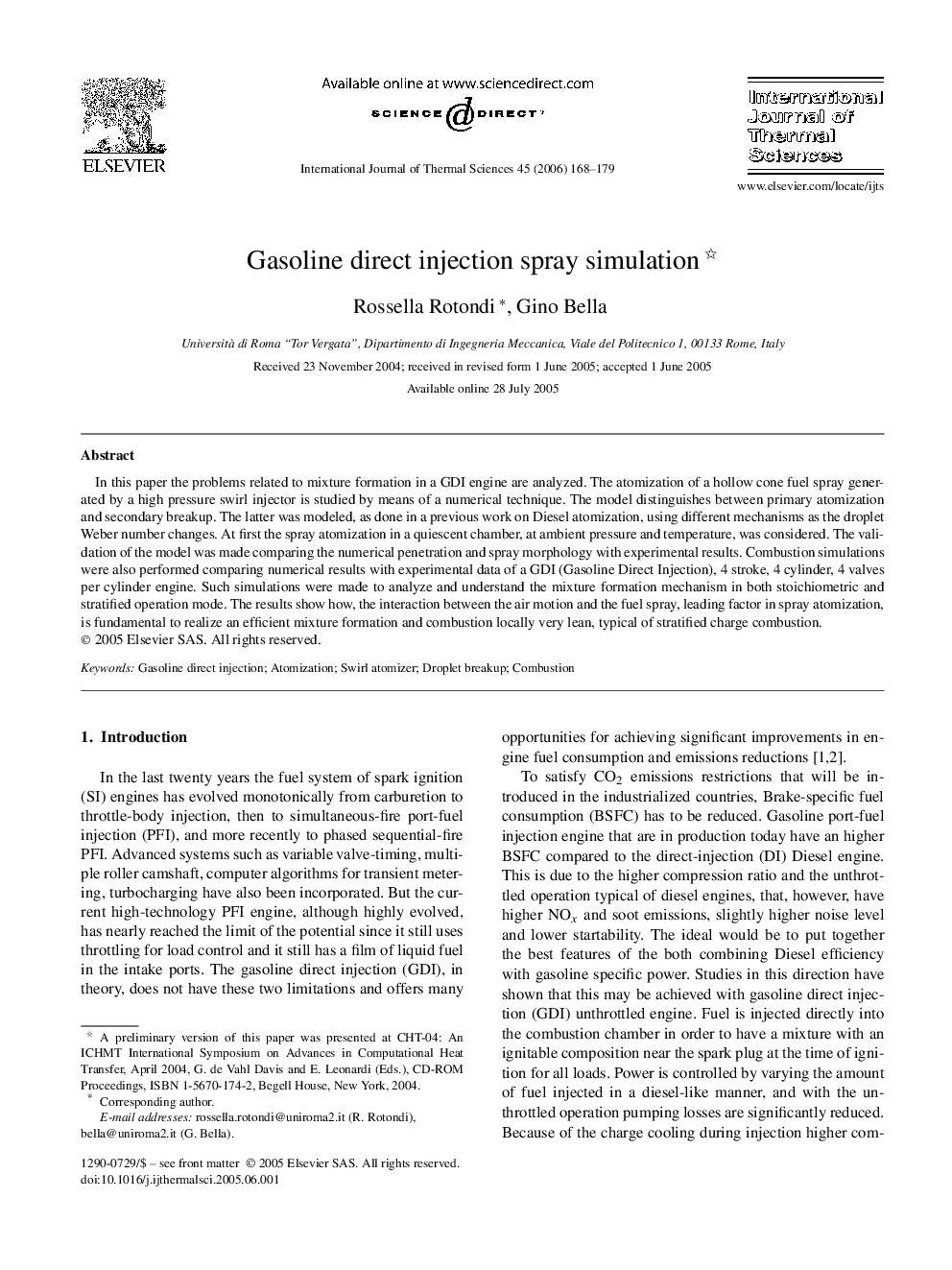| Article ID | Journal | Published Year | Pages | File Type |
|---|---|---|---|---|
| 670398 | International Journal of Thermal Sciences | 2006 | 12 Pages |
Abstract
In this paper the problems related to mixture formation in a GDI engine are analyzed. The atomization of a hollow cone fuel spray generated by a high pressure swirl injector is studied by means of a numerical technique. The model distinguishes between primary atomization and secondary breakup. The latter was modeled, as done in a previous work on Diesel atomization, using different mechanisms as the droplet Weber number changes. At first the spray atomization in a quiescent chamber, at ambient pressure and temperature, was considered. The validation of the model was made comparing the numerical penetration and spray morphology with experimental results. Combustion simulations were also performed comparing numerical results with experimental data of a GDI (Gasoline Direct Injection), 4 stroke, 4 cylinder, 4 valves per cylinder engine. Such simulations were made to analyze and understand the mixture formation mechanism in both stoichiometric and stratified operation mode. The results show how, the interaction between the air motion and the fuel spray, leading factor in spray atomization, is fundamental to realize an efficient mixture formation and combustion locally very lean, typical of stratified charge combustion.
Related Topics
Physical Sciences and Engineering
Chemical Engineering
Fluid Flow and Transfer Processes
Authors
Rossella Rotondi, Gino Bella,
